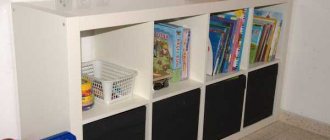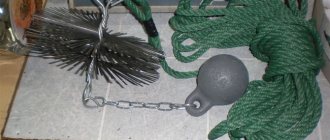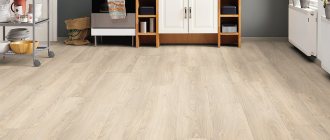Where and how can you store potatoes at home?
Everyone chooses where and how to store potatoes based on their capabilities.
In the cellar
Cellar storage is, of course, the best way. The conditions created in such a room are optimal for potatoes. There is no natural light or elevated temperatures in the cellar.
Before stacking, the potatoes are checked to ensure that all conditions are met. If necessary, the room is insulated and treated against rodents, after which the container is transferred to the storage location.
Important! It is not recommended to store potatoes in bags - they begin to rot and sprout.
If all conditions in the cellar are met, the tubers will remain in good condition for up to ten months.
In the basement
Potatoes are stored in the basement:
Many summer residents practice storing potatoes on racks. The tubers are laid out on the shelf in one layer. This makes it easier to keep track of them and discard spoiled ones.
On the balcony
To store potatoes on the balcony use:
Important! The storage area must be insulated to reduce the risk of tubers freezing at low temperatures. To do this, the walls, bottom and lid of the box are insulated with sawdust, wood shavings or polystyrene foam.
When sub-zero temperatures occur, wrap the container using old clothes or a blanket, old fur coats or canvas bags.
Important! Sunlight should not penetrate inside the container. It provokes the release of solanine.
To regulate humidity, place in the box:
Under such conditions, the container will maintain a temperature of up to +7°C.
In the corridor
Storing potatoes in the hallway is not the best solution, but sometimes it is the only possible one. In such conditions it is difficult to achieve the desired temperature and humidity. As a rule, the corridor is used as temporary storage. The container should be ventilated; a bottle or jar of water should be placed nearby to raise humidity. Sometimes the box is placed in a vestibule or entrance. In this case, the container will be equipped with a lock against uninvited guests.
When storing potatoes in the corridor, sudden temperature changes occur due to drafts, which negatively affects the condition of the vegetables.
Final part
Of course, you can order a ready-made box for storing potatoes or buy it in a store, but there is no guarantee that it will fit the parameters of your loggia. Moreover, most of these boxes are designed for a standard weight of only 20-30 kg. Making a box for vegetables will cost several times less. To construct it, you can use old boards lying around at home.
Sometimes it is easier to grow potatoes than to create conditions for their winter storage. This problem is especially relevant for city residents. You can buy a device for storing potatoes in an apartment, or you can make it yourself.
How to make such boxes, and what conditions generally should be for long-term preservation of potatoes in the cellar, basement and house - we will tell you in the article.
What should a potato storage box be like, how to make it yourself
A box is the most common container for storing potatoes. Its main advantage is mobility. It is convenient to use small boxes that can hold up to 12 kg. They are easy to carry, and there is quick access to the tubers to periodically sort through them. The material is plastic, wood or cardboard. The main thing is that it is convenient to monitor the safety of the tubers and there is excellent air ventilation.
Design requirements for the cellar and apartment
The general rules for maintaining the microclimate for storing potatoes are the same for both the cellar and the apartment.
The requirements for a homemade box are:
The only difference between the designs will be its size. As a rule, large structures are prepared for the cellar - bins, but in an apartment this is impossible.
Important! For storage in small spaces, choose a design with a top lid.
What materials to make it from?
Available and inexpensive materials for making a box are wood or plastic. Any wooden material will do: lining, plywood, chipboard, regular board. First, a frame is created, and then covered with wooden beams.
The advantage of making containers with your own hands is that you can precisely adjust its dimensions to the parameters of your storage space. If you settled on the plastic option, then today hardware stores have a lot of options for polymer containers. Among them there will certainly be one that is suitable in size.
Preparation
First, determine the place where the box will stand:
We are building a storage facility
The ideal option for preparing potatoes for winter storage is to dry the tubers at a temperature of 14-17°C for 6-8 days, not allowing direct sunlight to fall on them. Immediately after purchase, the vegetables may be damp, and among them there may be some that have begun to rot and are affected by disease. The sooner you find such tubers, the better; it is better to leave them for cooking and store them as strong, healthy ones. During the days that the potatoes are sorted and dried, their cuts will heal and the dampness will disappear. In the meantime, you will have the opportunity to build a special box for storing it on the balcony.
How to arrange balcony storage beautifully and conveniently? There are several options.
- Build the structure with your own hands. If you are sure that you will use the box for more than one year, start building shelves or a tall box from wood and clapboard. The inside can be lined with polystyrene foam and lined with foil - this will help retain heat better. Potatoes should avoid contact with the cold concrete of the balcony, iron and stones, otherwise they will soon turn black from frost. To do this, place a bottom shelf in a closet or drawer. The space between it and the floor serves as a kind of air cushion. If there is little space on the balcony, and you need a lot of storage space, then the box is made not standing, vertical, but horizontal - then on its lid you can lay bedspreads and pillows and arrange a sofa bed or bench that will be used in the warm season; Heated chamber. If the balcony is poorly insulated and in winter you feel all the charm of Russian frosts, the box should be heated. To do this, internal and external chambers are constructed (essentially two boxes of different sizes), between which polystyrene foam, construction foam and other insulation materials are placed. The same polystyrene foam, sawdust, cardboard or rags are placed on the pallet, which prevents the potatoes from coming into contact with the floor. Inside the box there are wires connected to ordinary household light bulbs. The switch from them is connected to the apartment. The lamps should be turned on every day for 4-5 hours. Little electricity is wasted, but the potatoes are exposed to dry heat, warming the box from the inside. Under such conditions, vegetables will not freeze even at -15°C – -25°C. A hairdryer is also suitable instead of light bulbs - it also provides dry heat; Old refrigerator. For those who cannot build a camera on their own, old things will come to the rescue. An excellent chamber will be made from a non-working refrigerator - especially since the thermal insulation in it has already been established. All that remains is to install the old friend instead of the box and remake the lid into an ottoman. A new element of the balcony interior and storage for vegetables is ready; Wooden or plastic boxes. If the crafts didn’t work out, and the old refrigerator was thrown away a long time ago, ordinary wooden and plastic boxes of the kind that vegetables are sold in in stores will do. They allow air to pass through perfectly, and for warmth they are separated from the wall with polystyrene foam and cardboard boxes. Cover the top with an old cotton blanket. Don't forget that the boxes should be placed on wood, cardboard or another layer that insulates them from the cold concrete floor.
Types of potato storage boxes
A box for storing potatoes in winter should have the following qualities:
A properly selected container for storing potatoes will prevent the vegetable from rotting and will preserve its taste.
Currently, there are several types of containers that are popular among people:
These types of containers must be equipped with ventilation and, if necessary, heating.
All potato storage boxes can be divided according to the type of opening: with a hinged lid, shaped like a refrigerator or cabinet, containers with pull-out shelves. A box with a hinged lid for storing potatoes can be used as a small sofa for sitting in an apartment or on a balcony.
A sofa box for storing potatoes is a convenient design that will fit perfectly into any interior
Drawings of potato storage boxes
If potatoes will be stored on a balcony or in another open room, the chest is equipped with heating, since temperatures below 10 ᵒC are detrimental to tubers. Creating such a mechanism is not difficult if you strictly follow the instructions.
You can install an incandescent lamp, which will provide the necessary heat.
The heat source must be covered with a tin container or foil to prevent the tubers from sprouting and turning green from the light.
You can also heat the potatoes with a hairdryer. It is attached to a tube, which is mounted in the bottom of the box.
The mechanism must be equipped with a thermostat so as not to monitor temperature changes independently
A box for storing potatoes in the cellar can simply be insulated with foam plastic. The layer of thermal insulation should be thick, cracks and joints should be carefully covered.
The design, even without heating, will work like a thermos, maintaining the required temperature inside and the taste of potatoes
Ready-made thermal containers
Thermal cabinets are divided into universal and cold-resistant.
Universal devices are capable of operating in any ambient temperature range. Cold-resistant ones are applicable only in the cold season. Such devices consume no more than 100-200 W, which is comparable to an incandescent lamp.
Balcony cellar
One of the options for a portable thermal container is called a balcony cellar. This is a bag/backpack with a heating element. The cellar is made of strong fabric and insulated with padding polyester.
The range is represented by bags of various capacities from 100 to 300 liters. Heating is carried out by a carbon filament with a current consumption of 100 to 220 W.
The built-in sensor maintains the optimal temperature. The bag is attached to the wall with two loops on dowel-nails. When folded, it does not take up much space. The cellar costs 6-7 thousand rubles.
What tools and materials will be needed
Before you start building an insulated potato box, you need to prepare everything you need. Tools will always be found in the house of a thrifty owner, but consumables are selected individually.
Tools you may need include pliers, a pencil, and screwdrivers.
The amount of consumables is calculated depending on the dimensions of the product. It is necessary to stock up on timber, plywood or chipboard, nails, canopies, screws, metal corners, polystyrene foam, and roll insulation.
Requirements for vegetable storage boxes
To prevent rotting of potato tubers, gaps must be left between the wooden crossbars.
The design is equipped with a removable lid - the inside of the chest must be periodically ventilated. Small holes are drilled in the lid to keep the storage dry and ventilated.
The box must be protected from mold; before starting work, wooden materials are treated with an antiseptic primer and coated with emulsion paint.
Also, the following requirements are imposed on a homemade design:
The potato storage box should not be placed in a draft; its place is in the far corner of the balcony or cellar
Manufacturing stages
A significant advantage of making your own potato storage box is that you can make it any size and shape. Select a material that suits all parameters. And be sure that your design is durable, environmentally friendly and spacious.
Box making process
Preparing the site and drawing
The storage space on the balcony must be dry. It is advisable that it be hidden from the sun and moisture. It would be correct to choose a position that would not interfere with free movement on the balcony, so that you do not accidentally drop the structure with containers.
Selection of materials and tools
To make a box for storing potatoes on the balcony in winter, you will need the following materials and tools:
Select the sizes of bars, boards and other materials based on the size of the box.
Construction stores offer a service for cutting boards to the required size. Knowing the required dimensions, you can easily purchase ready-made materials for assembling the storage unit.
Potato box diagram
Frame making
DIY vegetable box
Depending on the room and external factors, a potato box on the balcony can be made by hand with or without insulation.
With each board screwed on, the chest becomes heavier and takes up more space. Please take this into account before starting assembly and assemble the structure closer to the future location. Calculate the load-bearing capacity of the balcony in advance. Be careful, do not expose yourself and others to danger!
Warming the box
Most people living in apartments store potatoes on the balcony. Rarely does anyone have a heated balcony. And if it is not yet glazed, then the temperature there is exactly the same as outside. It is impossible to preserve fruits in such conditions. Therefore, the potato storage box needs to be insulated. Below are two options for making a warm box with your own hands.
First way . Insulate the box using thermal insulation material:
Second option . Heated potato box.
Heated box
You have made a box for potatoes with your own hands, but you cannot immediately pour vegetables into it; you must first process and prepare the storage.
Warm box for storing vegetables on the balcony
How to make a box from pallets for potatoes
Often, after purchasing building materials, unnecessary wooden pallets are left behind. Savvy craftsmen have learned to make various designs from them. A box of potato pallets can be lowered into the basement. The chest is not afraid of dampness, since durable, well-dried wood is used for its manufacture.
A potato storage box made from pallets will fit in a small pantry or on an insulated balcony
Design requirements
A potato storage box must meet several requirements:
All these requirements make it possible to preserve potatoes in their original form for a long time. If you do not ensure normal air circulation in it, the root crops will begin to rot one after another and you will have to throw them in the trash. To be able to control the air temperature and humidity level, you need to equip the potato storage box with a thermometer and a humidity meter.
DIY potato bin
Bin dimensions: height 700 mm, width 1400 mm, depth 700 mm. The distance from the floor to the bottom of the box is 300 mm. Given my height of 185 cm, these dimensions of the box allow me to comfortably pick up potatoes at the beginning with almost no bending, and at the end I can freely reach all corners of the box. However, the size of the hatch into the cellar does not allow the ready-made bin to be lowered into it. Therefore, the cutting of metal and welding of the main parts was carried out on the surface.
This is how the legs, bottom and top frame of the frame were cut out and welded.
And already in the cellar he carried out a large-scale assembly. This assembly did not take much time, because... the parts were adjusted on the surface. Therefore, there was no need to inhale smoke. The work from purchasing the metal to the welded frame took almost five hours.
Painting should improve the anti-corrosion properties of the potato box. And the appearance is not in last place. I paid 250 rubles for the paint.
The bottom and walls of the box are made of 50x25 slats. To minimize waste, I had to buy three-meter slats and deliver them in my car. It’s good that the base with metal and boards is located literally fifty meters from the gate of my garage cooperative. I paid 800 rubles for the rail.
It rained all night before my visit to the base. Therefore, the slats, sawn to size, had to be dried a little. In the morning, only the natural moisture of the wood remained. There was a crazy idea to plan the boards to make them smoother, but estimating that I would have to plan about a hundred blanks on four sides, I dismissed this idea. After all, this is just a bin for potatoes.
Next, all that remains is to knock down the grates onto the walls and bottom. The distance between the bars is 25 millimeters. The heads of the screws are slightly recessed into the wood to prevent their contact with the contents of the bin.
In operating mode, the walls and bottom are held by the weight of the stored potatoes. But nevertheless, I made several holes in the frame of the box and pulled the bars to the frame using self-tapping screws.
To be honest, when I saw the volume that the bags took up in the trailer, I began to doubt that they would fit in my bin.
But when I started pouring potatoes into the bin, they began to evenly fill the volume and it became clear that there was more than enough space. It can be seen that a couple of more bags will easily fit into the bin.
It is convenient to use a block to lower supplies into the cellar. However, it needs to be attached to something. I welded this bracket not for myself, but for my father’s garage.
Source
How to store potatoes on the balcony in winter
During the heating season, the air in living quarters is very dry and warm, so you can’t keep potatoes in your apartment - they will begin to sprout or dry out. As a rule, it is stored on the balcony. It is not always possible to keep it in standard vegetable boxes, only if the optimal temperature for tubers (+0–6 ° C) and humidity (40–85%) are maintained there.
At what temperature do vegetables begin to spoil?
In addition, vegetables should not be exposed to light - neither artificial nor solar. If this condition is not met, the tubers will begin to accumulate solanine, which makes the potatoes unfit for consumption. The presence of this substance is indicated by green spots on the peel.
It is difficult to withstand all these conditions, even if the balcony is glazed. Therefore, special boxes are used to store vegetables, inside which a microclimate suitable for potatoes is created.
We are building ground
If it is impossible to create an underground storage facility due to the groundwater level, you can store supplies in another type of vegetable storage facility, above ground, the premises of which, with proper design, insulation and ventilation, will protect the potato harvest no worse. How to build a vegetable storage facility above ground?
Step-by-step instruction
To build a ground storage facility you should:
Interior arrangement
If the owners of plots and private houses spend a long time figuring out how to make a vegetable storage facility, then they spend much less time on the internal structure.
To rationally use the space inside the storage facility, it is worth installing racks for storing fruits and vegetables, equipping a separate chest for potatoes and root vegetables, and installing light into the room with the help of specialists. If space allows, a separate rack for jars of pickles and compotes is installed in the vegetable storehouse. To assemble racks, you can use metal profiles, chipboard sheets, as well as plywood and natural wood.
Storage features depending on the type of balcony
The presence or absence of glazing and heating, the climate of the region - all this affects the temperature on the balcony. And you need to select the type of box taking these factors into account.
Provided that the temperature on the balcony stays around 0–+6 °C all winter, occasionally rising or falling slightly, it is permissible to use a simple chest without additional insulation. Before expected frosts, it is enough to throw a rag over it to protect the supplies from freezing.
It is important to remember: if the box will be placed on an open balcony, you need to make sure that precipitation does not fall on it. You can build a canopy over it or cover it with plastic wrap. The latter is placed so that it does not block the ventilation holes in the chest.
If the balcony is glazed, but not heated, and there are regular frosts in the region, you will need a container with insulation without heating. In places with a harsh climate, you will have to make an insulated chest with heating.
Preparation
To make a potato box correctly with your own hands, you need to decide on its location. It also happens that you can only put it in the corridor, because there is no space on the balcony. Make sure that the box does not interfere with free movement and does not stand in the aisle. On the balcony you should not install it near the partition because it will draw cold from it and the root crops will freeze.
Next you need to determine the size of the potato box. The parameters will depend on the area on which the box will be located, as well as on the number of root crops. In addition, it is important to decide on the shape of the structure. The type of door opening is also of great importance. In a small area, the best option would be to open doors vertically.
To complete the work you will need:
- wooden board or chipboard;
- screws, glue;
- bars for making legs;
- corners;
- carpentry tools;
- thermal insulation.
The advantages of making such a structure are that you don’t need to buy new materials to make it, but you can use the boards left over after the repair. Once all the necessary materials are prepared, you can begin to construct a potato box. The work will take place in several stages.











